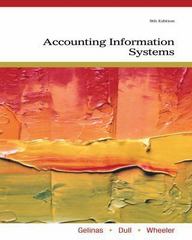Question
A partnership is A.created by mere consent B.created by operation of law C.a contract that should always be in writing D.composed of 2 to 5
A partnership is
A.created by mere consent
B.created by operation of law
C.a contract that should always be in writing
D.composed of 2 to 5 persons who bind themselves to contribute money, property or industry to a common fund.
All of the following statements are correct, except
A.The admission of an industrial partner into a partnership is recorded using a memorandum entry only.
B.When one or more sole proprietorships are converted into a partnership and it uses a new set of books, at the date of partnership formation, the individual books of the proprietorship should be adjusted only.
C.In a general partnership, all of the partners should be general partners who are liable to the extent of their personal property.
D.One of the partners in a proposed partnership is a billionaire. The stipulation in the contract of partnership that this partner shall be exempted from sharing in the profits of the partnership is void.
Which of the following statements is not correct?
A.Any salary allowances stipulated in the partnership agreement are always considered regardless the result of the operations is a profit or a loss.
B.The percentage of ownership interest of the partners may not be the same as their profit-sharing ratio.
C.Partnership profit or loss is shared equally, unless the partnership contract specifically indicates the manner in which profit or loss is to be divided.
D.The different kinds of partners in accordance to their capital contribution will always share in the profits.
If there is no agreement for the distribution of both profit and losses, it is concluded that:
A.Any profits and losses should be divided according to partner's original capital ratio.
B.Profits and losses should be divided equally.
C.Profits should be divided according to partner's average capital ratio and losses should be divided base on partner's original capital ratio .
D.Profits and losses are divided according to the beginning capital balances of the partners.
If A is the total capital of the partnership before the admission of a new partner, B is the total capital of the partnership after the investment of a new partner, C is the amount of the new partner's investment, and D is the amount of capital credit to the new partner, then there is:
A.A bonus to the new partner if B = A + C and D
B.A bonus to the old partner if B = A + C and D>C.
C.Both a and b are correct.
D.Both a and b are incorrect.
Statement I : If the capital credited to the new partner is less than his capital contribution to the partnership assuming all assets are fairly valued, there is a bonus coming from the old partners to be given to the new partner.
Statement II : If there are overvalued assets in the partnership, the amount of overvaluation only has an effect to the capital of the all the old partners including any retiring partner.
A.True, true
B.False, false
C.True, false
D.False, true
Statement I : In admission of a new partner thru purchase of interest, if the purchase price is greater than the capital credited to the new partner and there is no indication of assets not fairly valued, a bonus is given to the new partner.
Statement II : If the total implied capital is equal to the total actual contribution and the capital credited to the new partner is lower compared to the value contributed to the partnership, it can be concluded that there is no over or under valuation in the assets and the percentage of interest given to the new partner is not equivalent to his capital contribution resulting to a bonus coming from the old partner to the new partner.
A.True, true
B.False, false
C.True, false
D.False, true
Statement I: When a partner sells an interest to a new partner at an amount that exceeds the carrying amount of the equity sold, the difference is recognized as a gain of the partnership from the transaction.
Statement II : The amount of net assets invested of a new partner into an existing partnership increases the total partnership capital at the time of admission.
A.True, true
B.False, false
C.True, false
D.False, true
In the final partnership lumpsum liquidation transaction, remaining cash is distributed to
A.partners based on capital balances.
B.partners based on profit-loss sharing ratios
C.the partners with the greatest capital
D.the partner with the lowest capital balance.
Step by Step Solution
There are 3 Steps involved in it
Step: 1

Get Instant Access to Expert-Tailored Solutions
See step-by-step solutions with expert insights and AI powered tools for academic success
Step: 2

Step: 3

Ace Your Homework with AI
Get the answers you need in no time with our AI-driven, step-by-step assistance
Get Started


